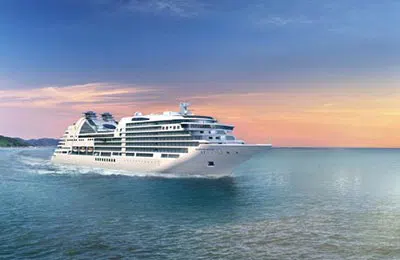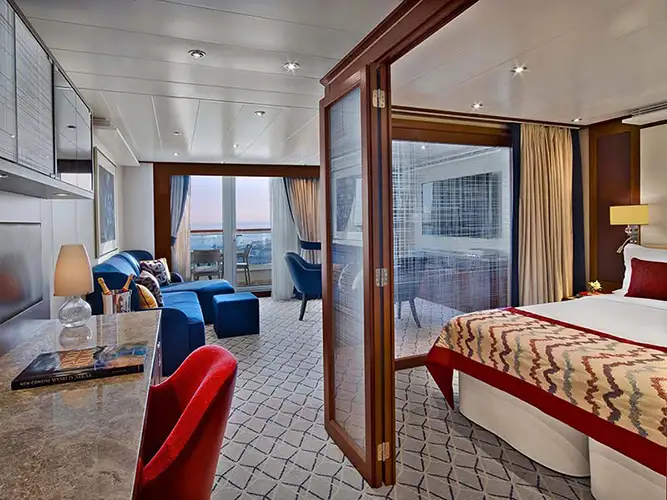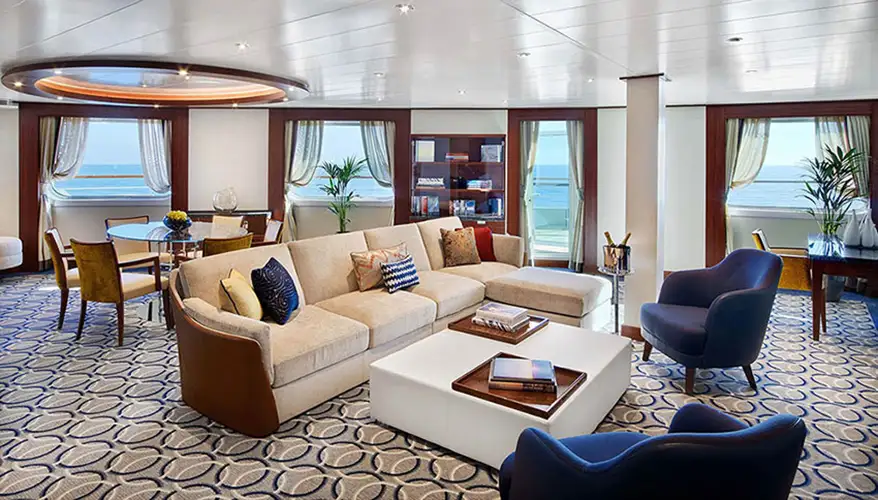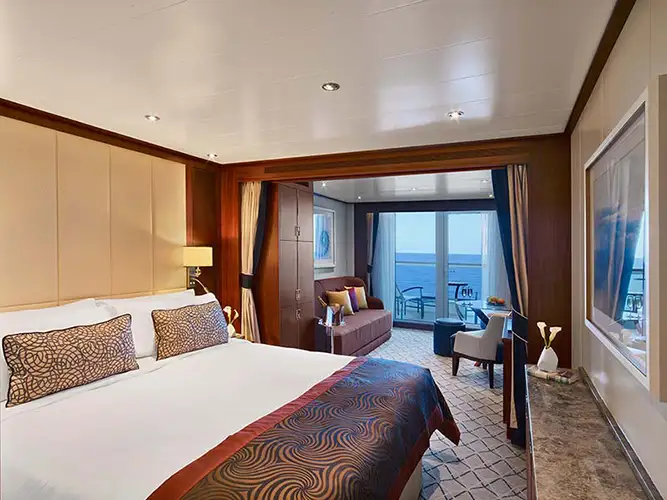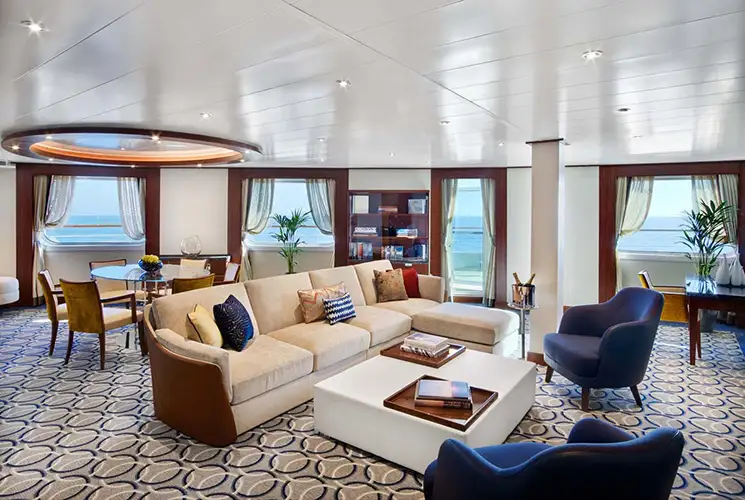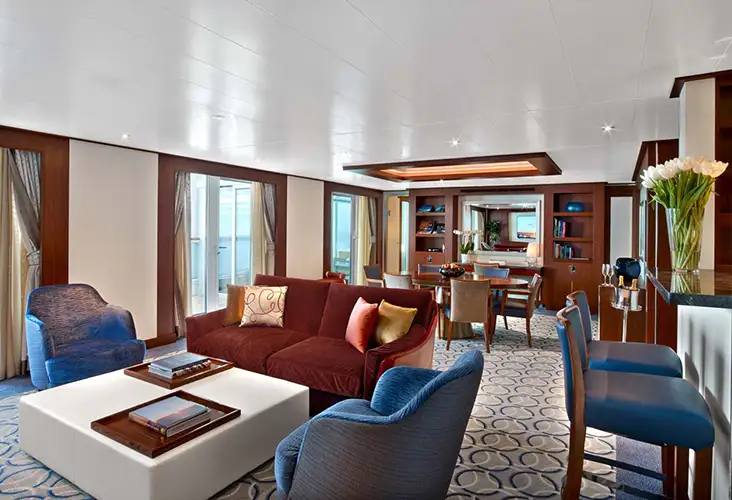Seabourn Mediterranean: 21 nights from Barcelona with Seabourn Ovation
Sep 25, 2027
Spain, France, Italy, Malta, Montenegro, Croatia, Slovenia, Greece
Cruise itinerary
Departure Port: Barcelona ➞
Landing: Athens
-
Saturday, September 25, 2027 - 5:00 PMBarcelona
-
Sunday, September 26, 2027 8:00 AM - 6:00 PMRoses
-
Monday, September 27, 2027Navigation
-
Tuesday, September 28, 2027 8:00 AM - 6:00 PMSanary Sur Mer
-
Wednesday, September 29, 2027 8:00 AM - 6:00 PMCalvi
-
Thursday, September 30, 2027 8:00 AM - 6:00 PMOlbia
-
Friday, October 1, 2027 8:00 AM - 6:00 PMPorto Santo Stefano
-
Saturday, October 2, 2027 7:00 AM - 6:00 PMCivitavecchia
-
Sunday, October 3, 2027 7:00 AM - 5:00 PMSorrento
-
Monday, October 4, 2027 8:00 AM - 6:00 PMGiardini-Naxos
-
Tuesday, October 5, 2027 8:00 AM - 6:00 PMValletta
-
Wednesday, October 6, 2027Navigation
-
Thursday, October 7, 2027 7:00 AM - 4:00 PMKotor
-
Friday, October 8, 2027 11:00 AM - 6:00 PMZadar
-
Saturday, October 9, 2027 7:00 AM - 5:00 PMVenice
-
Sunday, October 10, 2027 8:00 AM - 5:00 PMPirano
-
Monday, October 11, 2027 9:00 AM - 6:00 PMSibenik
-
Tuesday, October 12, 2027 8:00 AM - 6:00 PMKotor
-
Wednesday, October 13, 2027Navigation
-
Thursday, October 14, 2027 8:00 AM - 6:00 PMPorto Torres
-
Friday, October 15, 2027 8:00 AM - 6:00 PMNafplion
-
Saturday, October 16, 2027 7:00 AMAthens
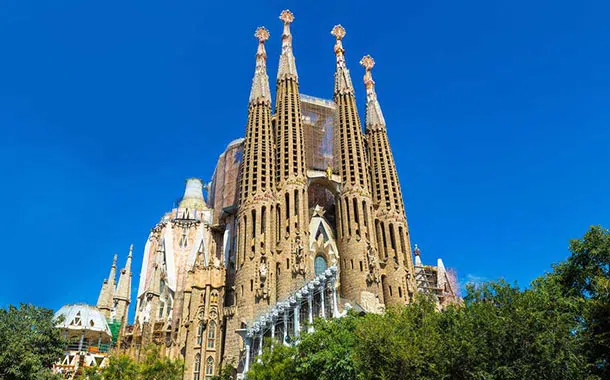
Barcelona
Barcelona, the capital of Catalonia, is a jewel enclosed between sea and mountains, an en plein air museum to be discovered. Catalonia is an autonomous region whose indipendence has long been a subject of debate and is still a topic that divides opinion in the country. The region has its own language, culture and history, most visible in its Roman ruins, Gothic cathedral and modernist buildings. The city of Barcelona is the emblem of this unique culture. Barcelona is the most cosmopolitan city in Spain and one of the most busiest port in the Mediterranean. In summer, the beautiful beaches of this city are a magnet for beach lovers. Beautiful beaches are not the only the reason why Barcelon is one of the most loved destionations for tourists.
The city is a symbol of the the artistic, culinary and cultural avant-garde: visit the Sagrada Familia and the other visionary architectural works of Antoni Gaudi, La Pedrera, Casa Batlllò or Park Guell. For sports lovers, a visit to Camp Nou is not to be missed, while for art lovers here is the Picasso Museum, the Caixa Forum, the MNAC or the Miró Museum. If you want to taste the local cuisine, restaurants and bars are the right choice. They are always crowded as the sea in summer. An holiday aboard a cruise offers the opportunity to visit this beautiful city and immerse yourself in this unique atmosphere.
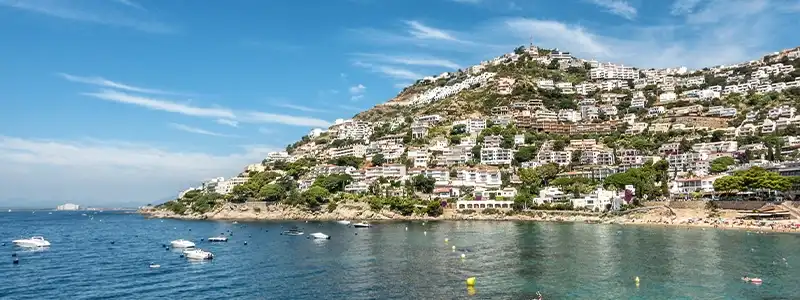
Roses
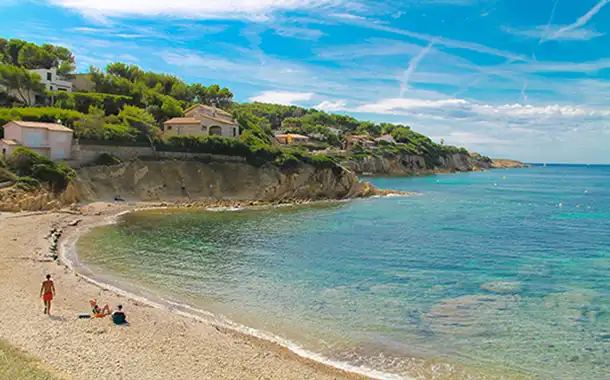
Sanary Sur Mer
Sanary-sur-Mer, located on the Mediterranean coast of France, is a delightful destination for cruise passengers wishing to discover the charm of Provence. Here are some of the main attractions that this charming seaside village has to offer:
1. The Old Port: The beating heart of Sanary-sur-Mer is its picturesque harbor, where you can admire colorful boats and luxurious yachts. A walk along the harbor offers spectacular views and the opportunity to savor the relaxed atmosphere of the place.
2. Open-air market: Sanary-sur-Mer hosts one of the most lively open-air markets in the region, famous for its fresh local products, including fruit, vegetables, cheeses and flowers. The market is a great opportunity to immerse yourself in the colors and flavors of Provence.
3. Church of Saint Nazaire: This Gothic church, located near the port, is known for its magnificent stained glass windows and imposing architecture. It is a place of peace that reflects the deep religious history of the region.
4. Island tours: Several boat tours depart from Sanary-sur-Mer to explore the surrounding islands, such as the Embiez and Bendor islands. These excursions offer splendid opportunities for swimming in crystal clear waters and discovering preserved natural environments.
5. Beaches: The beaches around Sanary-sur-Mer are known for their beauty and tranquility. Beaches like Plage de Portissol offer a perfect retreat to relax, sunbathe and take a refreshing dip in the Mediterranean.
6. Diving Museum: For maritime history enthusiasts, the Diving Museum in Sanary-sur-Mer offers a fascinating insight into the evolution of diving equipment with a unique collection of historical artifacts.
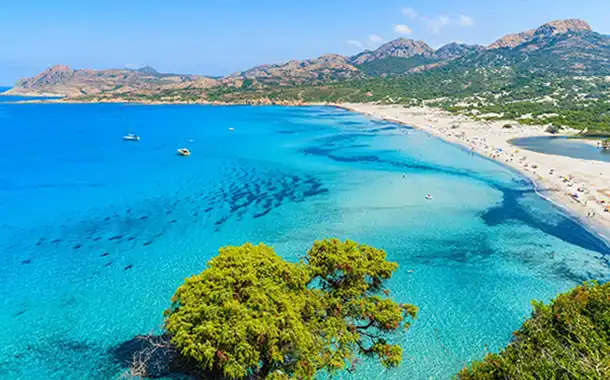
Calvi

Olbia
Olbia is a municipality in the province of Sassari and it is one of Sardinia's main cities in terms of industrial and economic development. The city is a very important tourist resort: many tourists choose Olbia as a destination for their summer holidays, thanks to its dreamy beaches and resorts such as Porto Rotondo and Portisco. In Olbia, you can visit the Romanesque-style church of San Simplicio and the Baroque-style church of San Paolo.
Olbia offers some of the most beautiful beaches of the island, for example Cugnana and Rena Bianca, where the crystal-clear water and white beaches make them one of the most sought after destinations in the summer.
The city has a port important both for cruise passengers and ferry boat ones: for this reason is linked to the ports of Civitavecchia, Genoa, Livorno and Piombino.
Olbia offers a cozy atmosphere and in the summer it fills up of young peoploe strolling around the streets or drinking with friends in many clubs in the center of the city. In the center of the city, live music or markets that offer typical products or handmade objects can be easily found.
The city is a very important port for both cruise tourism and ferry traffic: it is in fact connected to the port of Civitavecchia, Genoa, Livorno and Piombino.
Olbia offers a welcoming atmosphere and in summer it is populated by young people who walk along the street or drink something in company in the many clubs that are in the center. In the center it is easy to find live music or markets that offer typical products or handmade objects.
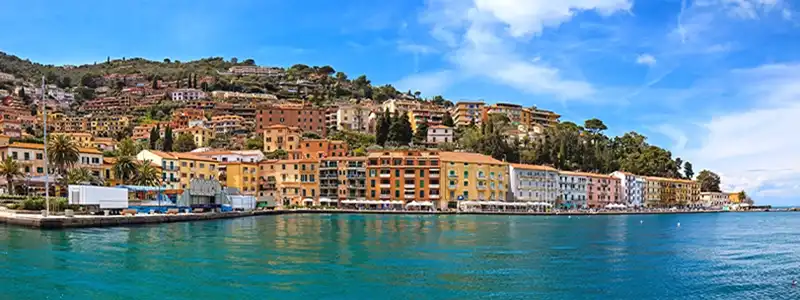
Porto Santo Stefano
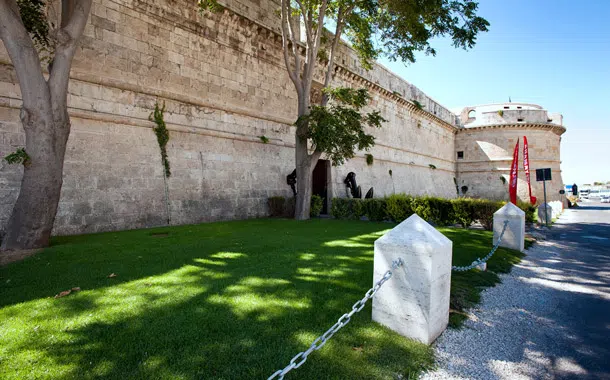
Civitavecchia
The port town of Civitavecchia is about an hour away from the Italian capital and is where ships will dock before bringing lucky holidaymakers into the city of Rome. It is an important port for cruise ships and ferries, connecting to Corsica, Sardinia and Barcelona. Civitavecchia is a town in the heart of Lazio. It is a small, sleepy town that overlooks the sea from behind the busy and chaotic commercial port.
Spreading out along the coast, the town is situated between the Mignon river to the north and the Marangone river to the south.
Civitavecchia is a port town in the heart of Italy, in the province of Rome, 80 kilometres northwest of the capital.
It is shrouded in art and history, and is rich in bays and coves with sandy and rocky beaches. Today the town is the departure point for many cruises and journeys around the Mediterranean. It is an excellent tourist destination where you can simply enjoy 'la dolce vita' or visit the amazing historical monuments. On a level with the majestic ancient capital, in terms of its monuments, gardens, villas and works of art, it also gives you easy access to the Tyrrhenian Sea, the Terme della Ficoncella, and the Etruscan ruins.
Civitavecchia will guarantee you an original and enchanting experience.
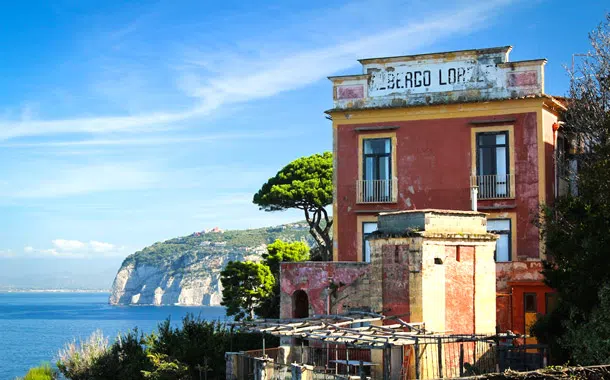
Sorrento
According to a Greek legend, it was in the waters of Sorrento that the mythical Sirens once lived. Like them, this location is able to bewitch its visitors.
Dating back to Greek times, Sorrento's strong point is its fabulous location. Straddling cliffs overlooking the Gulf of Naples and Vesuvius, it is ideally located for exploring the surrounding areas: the best of the uncontaminated countryside, the Amalfi Coast, Pompeii and the archaeological sites and the fabulous island of Capri.
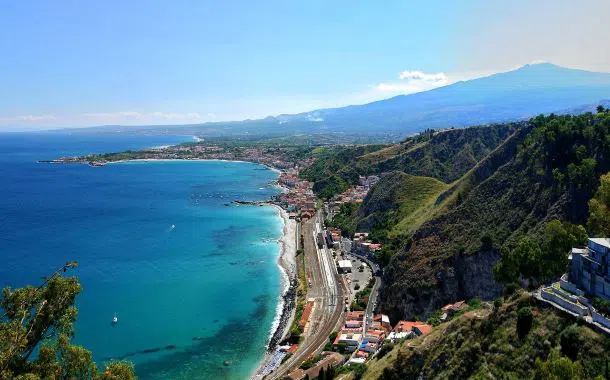
Giardini-Naxos
Giardini-Naxos (Giaddini or Giaddina in Sicilian) is an Italian municipality in the province of Messina in Sicily. Formerly called Nasso, it is 40 km from Messina and 39 km from Catania. In 1978, "Naxos" was added to the old name of the town ("Giardini").
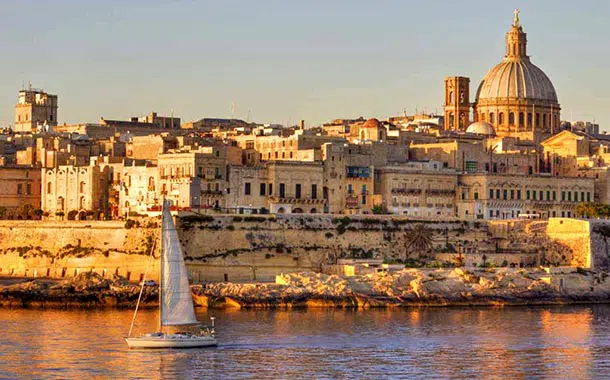
Valletta
Malta is one the smallest States in the Mediterranean. Few European countries have such a concentration of history, architecture and, beautiful beaches in such a small area. Malta is one of the most concentrated areas of historical interest anywhere in the world, for this reason it was called La Valletta when Unesco awarded it the title of World Heritage Site. The city is therefore the ideal city for art lovers and it is renowned for its massive fortifications and architectural excellence.One of the most concentrated areas of historical interest elements in the world, so La Valletta was described when Unesco awarded it the title of world heritage site, the city is therefore a guarantee for art lovers and certainly renowned for its massive fortifications and architectural excellence.
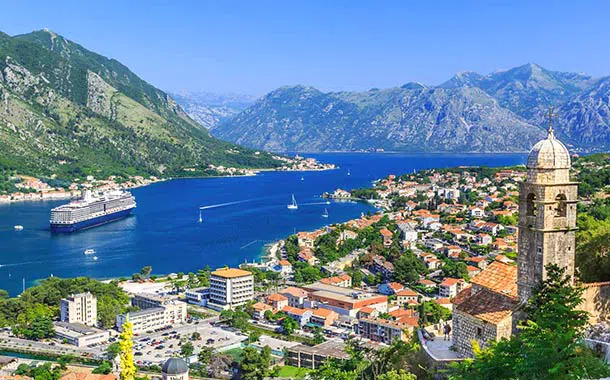
Kotor
The Adriatic Sea penetrates the jagged coast of Montenegro and winds between high mountains until it meets the exquisite and walled medieval city of Kotor.
Along the Adriatic coast of the former Yugoslavia, we find one of the most unique and fascinating European coastal areas, the city hidden in Montenegro, Kotor.
Located at the bottom of a bay, the beautiful medieval city of Kotor is considered a Mediterranean location surrounded by cliffs and an interesting historic wall. The tourist attractions of Kotor are easily reached with a pleasant walk. This small walled city, declared a UNESCO World Heritage Site, has compact dimensions that make it comfortable and easy to visit.
The central part of Kotor was built between the XII and XIV centuries. A historic center surrounded by a rather thick wall, four and a half kilometers long and fifteen meters high. This immense fortified wall reaches the bastion of Sveti Ivan (San Giovanni).
Inside the walls, it preserves an urban network cut into the stone. Its most emblematic work is the Cathedral of San Trifone, built in the 12th century. Inside the church it contains objects and frescoes sculpted during the 14th century. Furthermore, The Orthodox Church of San Nicolas, built between 1902 and 1909 in neo-Byzantine style and that of San Luca (13th century) built in Romanesque and Byzantine style.
Together with the churches, the city includes many palaces that tell its history: the Maritime Museum, located in the Grgurina Palace, a splendid baroque building located in the historic center of the country. The Drago house, with its beautiful Gothic windows, the Prima building, where Renaissance and Baroque lines are combined, the Ducal Palace and the Bizanti, both from the 17th century and the Napoleonic theater in the 19th century.
In Kotor, it is very common to see locals located along the rocky coast in the lower part of the city. In the old part of the area you will find many shops and restaurants that will delight your eyes. This location is the classic ideal city to spend quiet days or for a romantic getaway.
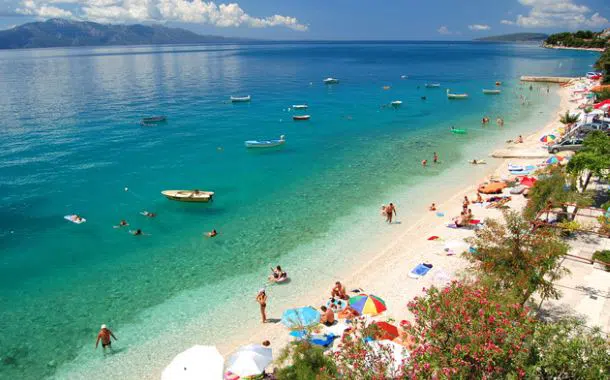
Zadar
Thanks to its geographical position, its beaches and attractive environment Zadar is an ideal destination for visiting the Dalmatia. Icing on the cake: the sunset would be the best in the world according to Alfred
Hitchcock.
Regional capital of northern Dalmatia, Zadar is a small coastal city in Croatia protected by lots of islands of the Kornati archipelago, one of the largest in the Mediterranean. If you want to enjoy your stay in this enchanting country, May, June and September are the most ideal times. A peaceful atmosphere is emanated from this ancient walled city. Surrounded by the sea and numerous pebble beaches, in the territory there are many national parks, in particular the most notably are the Plitvice Lakes, the Krka waterfalls and Velibit Mountain. Even after getting to know the city, you can admire the islands of the Kornati National Park, where you will find a labyrinth of untouched oases. This blessed place of the gods is ideal for diving and snorkling.
The surprising feature of Zadar: it is the only city in the world with a
marine 'organ', the waves produce a sound similar to the instrument used in the church. This is a further reason to discover this city rich in history and full of charm. This island has been inhabitaed for more that three decades, this is testifyed by its magnificent historical and archelogist ruins for example the 9th century monastery of San Donato, the 16th century Venetian bastions or the Porta della Terraferma, both Venetian. The central arch is decorated with a statue of St Chrysogonus, the patron saint of the city, these are just some of the places to visit. If you also plan to have fun, you will find several summer cultural events here, including Zara of Dreams or the musical nights of San Donato. For party-goers, we recommend one of the most famous clubs in Croatia, the Hacienda, which always hosts famous DJs and it is located between Zadar and Šibenik. While for liquors lovers, especially local ones, you can enjoy a typical local Maraschino in the evening.
The capital of Dalmatia, Zadar, is a small coastal city, located in Croatia and protected by numerous islands of the Kornati archipelago, one of the largest in the Mediterranean. If you want to enjoy your stay in this enchanting country, May, June, and September are the most ideal period. In this ancient walled city emanates a peaceful atmosphere. Surrounded by the sea and numerous pebble beaches, the territory has various national parks, in particular, the Plitvice Lakes, the Krka waterfalls, or the Velibit mountain. Even after knowing the city, you can contemplate the islands of the Kornati National Park, where you will find a labyrinth of pristine oases. This place blessed by the gods is ideal for diving and snorkeling. The striking feature of Zadar: it is the only city in the world with a "sea organ", the waves produce a sound similar to that of the instrument used in the church. One more reason to discover this coastal city rich in history and full of charm. This region has been inhabited for more than three millennia, as evidenced by the magnificent historical and archaeological finds. The monastery of San Donato of the 9th century, the Venetian bastions of the 16th century or the Porta della Terraferma, also Venetian. The central arch is decorated with a statue of San Crisogono, patron saint of the city, these are just some of the places to visit. If you also plan to have fun, here you will find several summer cultural events including Zadar of Dreams or the musical nights of San Donato. For partygoers, we recommend one of the most famous clubs in Croatia, Hacienda which always hosts well-known DJs, is located between Zadar and Sibenik. While for lovers of liqueurs, especially the local ones, in the evening you can enjoy a Maraschino typical of the area.
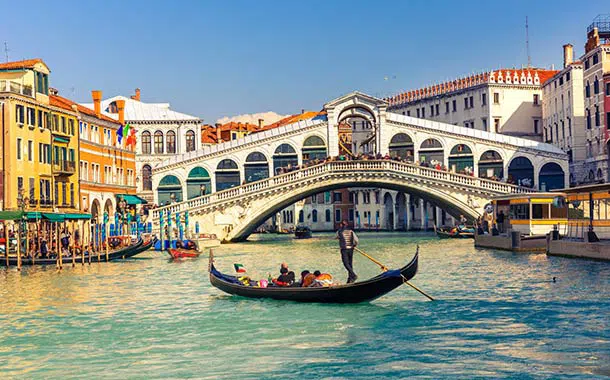
Venice
Setting sail from Venice on a cruise ship is unique and unforgettable. Discover all the cruises that depart from Venice for a great start to your holiday!
Venice it is one of the golden destinations of our age. A unique city of 120 islands, with an ancient history and endless waterways, it attracts a constant flow of tourists from all over the world to see its inspiring architecture and navigate its canals.
There are many souvenirs you can bring home from Venice, but the most lasting memory will be your impression of the city itself.
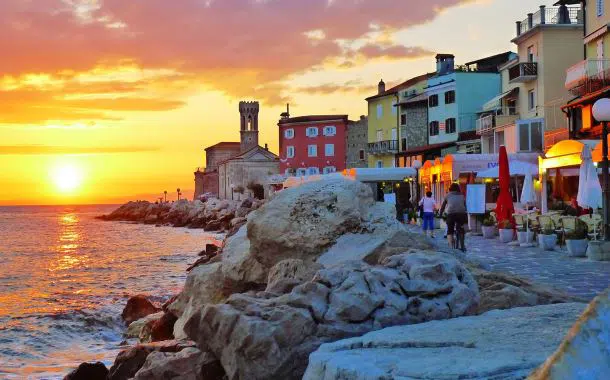
Pirano
Pirano or Piran of Istria (in Slovenian Piran, in Venetian Piràn) is a municipality of 17,882 inhabitants in southwestern Slovenia, on the Adriatic coast. It is a small Slovenian town with specific characteristics, and whose urban heritage is the best preserved in the entire region. The characteristic of this peninsula is known throughout the world. Up close, you can admire the typical architecture that reveals a strong Venetian influence, which is also found in other cities on the Slovenian coast. The city has preserved its medieval village: narrow streets, many squares and churches, all within walking distance from the sea. Tartini Square, located in the center, takes its name from the famous violinist and composer Giuseppe Tartini. His statue is in the central point of the square. Piran is surrounded by a circular wall that allows Piran to be a member of the European Circle of Cities with outer walls. Open-air exhibitions take place throughout the year in different locations involving illustrious men. The church of San Giorgio, patron saint of the city, built on a hill, has a splendid view of Piran and the surrounding area which extends to the Croatian and Italian coasts. The structures (hotels, hostels, guesthouses), cultural visits (churches, art galleries, museums, aquarium) make Piran an unforgettable place.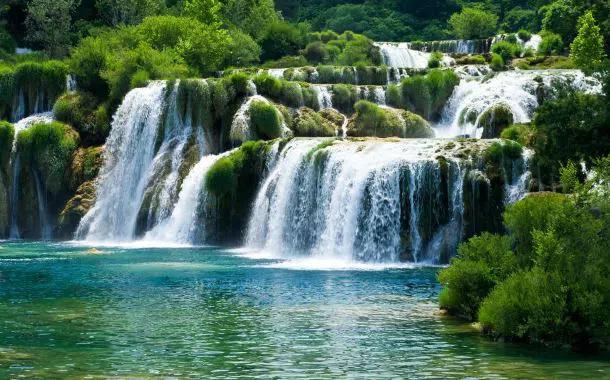
Sibenik
Sibenik is a Croatian city, which is located on the beautiful coast of Dalmatia. Famous for its Saint-Jacques cathedral, which appears on the UNESCO World Heritage List. The peculiarity of Sibenik is its traditional hat in orange and black which also represents the colors of the city. Known for its scenic beauty and the cultural richness of its historical monuments. Do not miss the statue of King Petar Kresimir IV between the park and the start of the walk along the sea. For a short period of history, Sibenik was the seat of the King of Croatia. The metropolis was under Venetian rule for almost 300 years. The old part of the city, rich in churches, palaces and ancient noble houses in typical Dalmatian stone and well-preserved walls, a real jewel. One of the most interesting sites is the garden of the medieval monastery. Sibenik has a Mediterranean climate with summer temperatures around 30 °C. The driest months, therefore the best for traveling, are July and August. A few hundred meters along the coast you will find numerous bars, restaurants and pizzerias. During the summer nights you can walk in the city and enjoy the delicious ice cream, usually homemade. In summer, there are also many popular and classical music concerts.
Kotor
The Adriatic Sea penetrates the jagged coast of Montenegro and winds between high mountains until it meets the exquisite and walled medieval city of Kotor.
Along the Adriatic coast of the former Yugoslavia, we find one of the most unique and fascinating European coastal areas, the city hidden in Montenegro, Kotor.
Located at the bottom of a bay, the beautiful medieval city of Kotor is considered a Mediterranean location surrounded by cliffs and an interesting historic wall. The tourist attractions of Kotor are easily reached with a pleasant walk. This small walled city, declared a UNESCO World Heritage Site, has compact dimensions that make it comfortable and easy to visit.
The central part of Kotor was built between the XII and XIV centuries. A historic center surrounded by a rather thick wall, four and a half kilometers long and fifteen meters high. This immense fortified wall reaches the bastion of Sveti Ivan (San Giovanni).
Inside the walls, it preserves an urban network cut into the stone. Its most emblematic work is the Cathedral of San Trifone, built in the 12th century. Inside the church it contains objects and frescoes sculpted during the 14th century. Furthermore, The Orthodox Church of San Nicolas, built between 1902 and 1909 in neo-Byzantine style and that of San Luca (13th century) built in Romanesque and Byzantine style.
Together with the churches, the city includes many palaces that tell its history: the Maritime Museum, located in the Grgurina Palace, a splendid baroque building located in the historic center of the country. The Drago house, with its beautiful Gothic windows, the Prima building, where Renaissance and Baroque lines are combined, the Ducal Palace and the Bizanti, both from the 17th century and the Napoleonic theater in the 19th century.
In Kotor, it is very common to see locals located along the rocky coast in the lower part of the city. In the old part of the area you will find many shops and restaurants that will delight your eyes. This location is the classic ideal city to spend quiet days or for a romantic getaway.
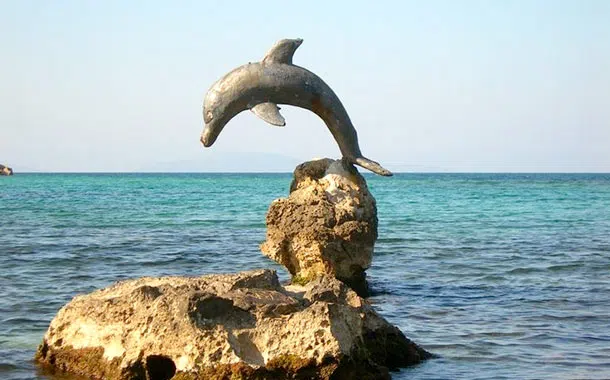
Porto Torres
Porto Torres is an important port in Sardinia from which many cruise ships depart. On Taoticket we have many cruises departing from Porto Torres, discover them all and find the lowest prices for an original holiday in the Mediterranean.
Porto Torres, in the province of Sassari, is one of the most populated and tourist centers in Sardinia. Located in the plain of Nurra, it includes in its territory the Island of Asinara and the Island of Piana. Two rivers mark its boundaries: the Fiume Santo and the Riu Mannu. Porto Torres has very ancient origins, as evidenced by the Neolithic remains present on the territory, visible above all in the Necropolis of Su Crucifissu Mannu.
In recent years, tourism has experienced a considerable growth, especially thanks to the increase in Cruise ships that call or depart from the port of Porto Torres. We recommend the excursion to the Asinara national park, where you can admire magnificent landscapes and immerse yourself in Sardinian and Turritan culture. If you are passionate about Spas, the Terme Centrali, also known as the Palazzo di Re Barbaro, is a must-see archaeological site that will take you on a dip in ancient Rome.
The Terme Maetzke are also very important. If you walk through the city, get lost as far as the small church of San Gavino a Mare, also called "Balai Vicino" or go to the Church of Santu Ischabizzadu, called "Balai lontano".
The Turritan cuisine is naturally rich in fresh fish, try the anchovies in tomato sauce or the freshly caught octopus salad! These dishes are often accompanied by vegetables, such as stewed courgettes, aubergines and fresh broad beans when in season. Characteristic of the region is the traditional use of snails in the kitchen, which are even imported from Tunisia due to the high demand.
Discover the Mediterranean with a cruise from Porto Torres full of emotions and adventures.
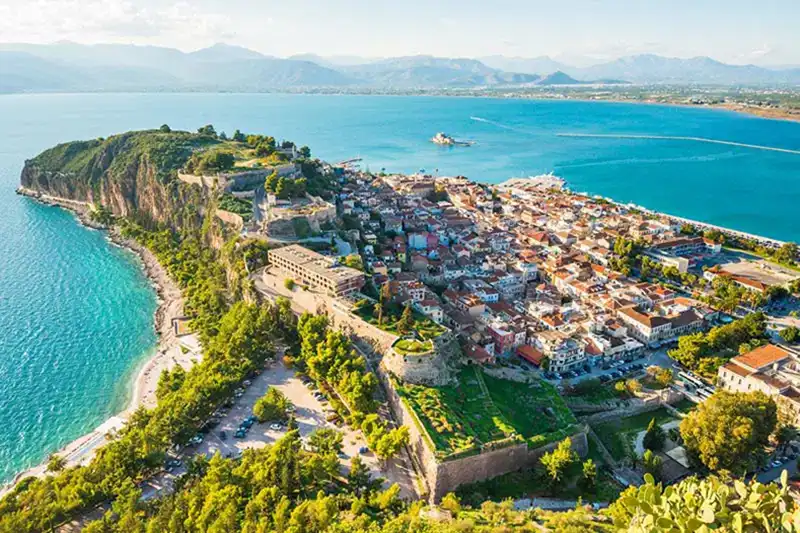
Nafplion
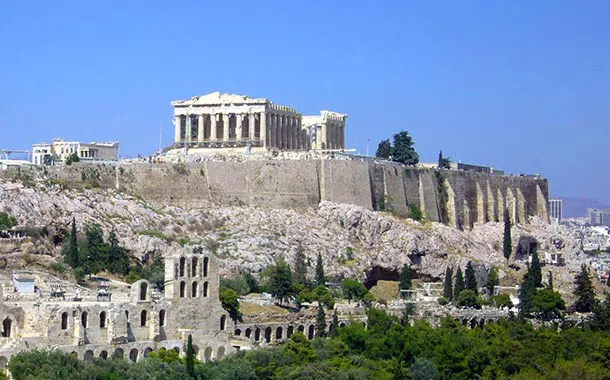
Athens
For many, Athens is a city lived two thousand five hundred years ago. Symbol is the mighty Acropolis which dominates almost every view and itinerary of every visitor, crowned by the iconic Parthenon, stands above the city, watching the sprawling modern metropolis in evolution.
Athens, the capital of Greece, is a city where antiquity and modernity, history and contemporary culture blend in a unique way. Everyone knows that the name of the city derives from the ancient Greek goddess of wisdom and justice. However, few people actually know the legend behind this event. According to myth, Athena and Poseidon, the God of the seas, vied for the right to name the city. Poseidon, to impress the inhabitants, gave them water, while Athena gave them an olive branch.
At first the choice fell on Poseidon, since the citizens considered water the most precious gift. When, once they tasted the water, they discovered that it was salty and not drinkable, they changed their minds and recognized Athena as their patron. One of the most famous historical sites in the city is the Acropolis, a majestic hill topped by ancient Doric temples, including the Parthenon, built in 477 BC. and the Erechtheion, built between 421 and 406 BC. Climbing the Acropolis, tourists can enjoy a breathtaking view of the city and the Aegean Sea. However, Athens is not only history, but also a lively cultural capital. In the Plaka district, located at the foot of the Acropolis, it is possible to stroll through the welcoming streets, visit the traditional Greek taverns and enjoy the authentic atmosphere.
Then there are the numerous cultural activities offered by the numerous museums, galleries and theaters present in the city. Athens is an important port for cruise ships that offer trips to the Mediterranean and beyond. Cruises from Athens allow guests to explore the rich cultural heritage of Greece, including the islands of Crete, Santorini and Mykonos, where you can admire the crystal clear waters of the Aegean Sea and a coast of white houses.
In addition to the Greek islands, cruises from Athens also offer the opportunity to visit other exciting Mediterranean destinations, including historic cities in Italy, Croatia and Turkey. Athens is therefore not only the historical and cultural center of Greece, but also an important starting point for cruises in the Mediterranean, which offers guests the opportunity to immerse themselves in the great history and splendid landscapes of this unique region.
Many still think of Athens as an ancient city that thrived two and a half thousand years ago. Its symbol is the mighty Acropolis, which dominates almost every view and the itinerary of every visitor, and it is crowned by the iconic Parthenon, which rises above the city, overlooking the sprawling and evolving modern metropolis.
Perhaps the most significant change is in the historical centre, which is almost unrecognisable since cars have been banned. This has liberated the area with the most significant archaeological sites, creating the longest, and undoubtedly one of the most splendid, pedestrianised zones in Europe. This huge archaeological park has brought past and present together, returning the cultural and social life of the city to the area around the ancient monuments and surrounding neighbourhoods.
Athens remains a city of contradictions; it is both frustrating and seductive. It is the oldest city in Europe, yet still in a state of transition. It is one of the safest and most vibrant European cities - an intoxicating mix of grunge and grace with an undeniably urban soul.
